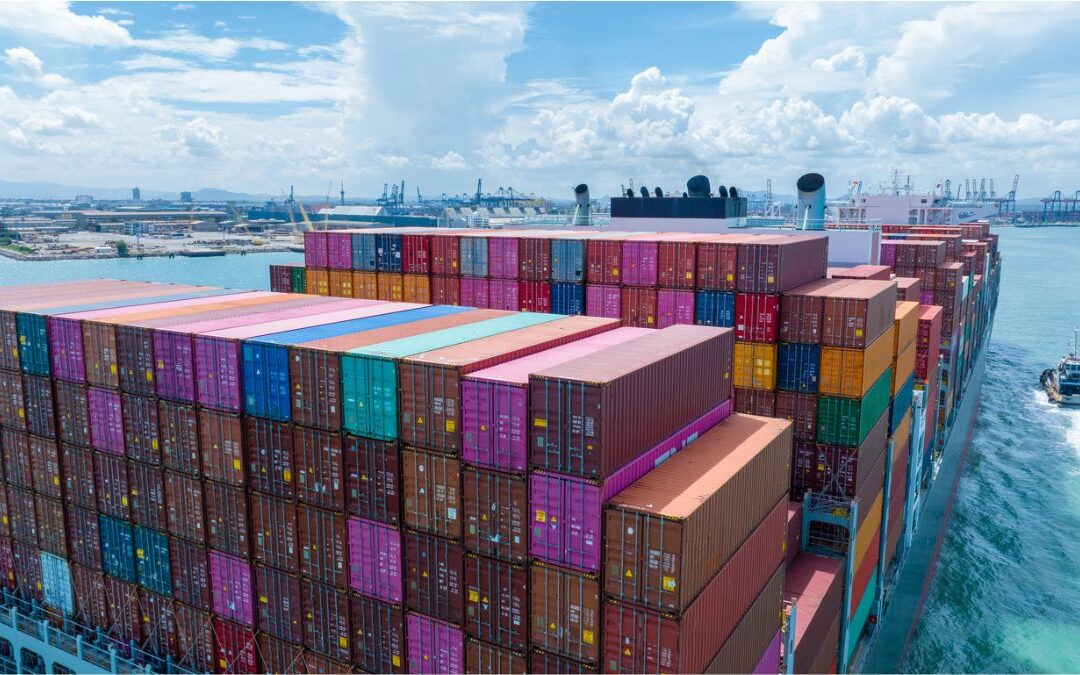Selecting the right sea freight container is essential for businesses shipping goods internationally. The type, size, and specifications of a container impact cost, efficiency, and safety. Understanding container sizes, types, and dimensions helps optimise logistics strategies, ensuring secure and cost-effective transport. Many shipments also require multimodal transport solutions combining sea freight with road freight and customs clearance services. Additionally, container tracking technology enhances shipment visibility and security.
Understanding sea freight containers
A sea freight container is a standardised, reusable steel box designed to transport goods via ships over long ocean journeys while protecting cargo from weather, moisture, and physical damage. Most containers conform to ISO (International Organization for Standardization) standards ensuring global compatibility. Common container sizes are measured in TEUs (Twenty-foot Equivalent Units), with 1 TEU equal to a 20ft container.
Shipping containers come in a variety of sizes and types, each suited for different kinds of cargo. The most commonly used containers adhere to ISO (International Organization for Standardization) standards, ensuring compatibility across global supply chains.
Common sea freight container types
Selecting the right container depends on cargo type, volume, weight, and destination. Understanding these factors ensures full advantage of sea freight’s cost-efficiency and reliability. Learn more about our tailored UniOcean Sea Freight solutions.
1. Standard dry containers
Best for: General cargo, boxed goods and non-perishable items.
Standard dry containers are the most commonly used type. They are fully enclosed and weatherproof, suitable for a wide range of goods. Available mostly in 20ft (1 TEU) and 40ft sizes, these containers are standard in global shipping. For efficient storage and distribution of goods, these containers often integrate with Uniserve’s warehousing and distribution facilities.
Common standard container sizes:
| Container Type | Length | Width | Height | Capacity (Cubic Metres) |
|---|---|---|---|---|
| 20ft Dry Container (ISO 668:2013 20ft GP) | 6.06m | 2.44m | 2.59m | 33.2m³ |
| 40ft Dry Container | 12.19m | 2.44m | 2.59m | 67.7m³ |
| 40ft High Cube | 12.19m | 2.44m | 2.89m | 76.4m³ |
The 40ft High Cube container provides additional height for bulkier cargo.
2. Refrigerated containers (Reefers)
Best for: Perishable goods such as food, pharmaceuticals and flowers.
Refrigerated containers (reefers) are temperature-controlled and used for transporting perishable goods that require consistent cooling or freezing.. Reefers maintain precise temperature control and are essential for sensitive cargo like food and pharmaceuticals, complying with strict temperature regulations. Explore our tailored healthcare logistics services for specialised pharma transport.
3. Open-top containers
Best for: Oversized machinery, large equipment and goods that cannot be loaded through doors.
Open-top containers feature removable roofs, facilitating crane loading of bulky cargo. They are commonly used for heavy equipment shipments requiring careful customs documentation and clearance, supported by Uniserve’s customs services.
4. Flat rack containers
Best for: Heavy and oversized cargo such as industrial equipment and construction materials.
Flat rack containers feature collapsible sides for loading heavy or irregular cargo. These are ideal for vehicles, machinery and large pipes, supported by Uniserve’s expertise in aerospace and industrial logistics.
5. Tank containers
Best for: Liquid cargo such as chemicals, fuel and food-grade liquids.
Tank containers are cylindrical, stainless-steel containers designed for carrying liquid cargo. They are used for both hazardous and non-hazardous liquids and provide a safer alternative to transporting liquids in drums or barrels.
Choosing the right sea freight container for your shipment
Selecting the right container sea freight option depends on several factors, including cargo type, volume, weight and shipping destination. Here are key considerations when choosing a sea freight container:
1. Cargo type and special requirements
For sensitive industries such as luxury brands, healthcare, or aerospace, specialised container solutions and handling are essential.
- Perishable goods? Opt for a refrigerated container.
- Oversized machinery? Use an open-top or flat rack container.
- Liquid cargo? A tank container is the best choice.
- Standard goods? A 20ft or 40ft dry container is sufficient.
2. Sea freight container sizes and capacity
Choosing the correct size (20ft, 40ft, or High Cube) ensures cost-efficiency and minimal unused space. Be aware of maximum payloads which vary by shipping line and route and dimensional weight pricing for some cargo types.
3. Weight restrictions and load capacity
While sea freight container dimensions are standardised, the maximum weight varies depending on shipping routes and regulations. Overloading a container can result in additional fees or transit delays.
4. Shipping distance and transit time
Longer transit times may require additional protection for goods. If shipping sensitive products over long distances, refrigerated or well-insulated containers can prevent damage.
5. Tracking and security
For businesses requiring visibility over their shipments, sea freight container tracking is an essential feature. Modern tracking solutions allow real-time monitoring of container locations, helping businesses improve logistics planning and security.
How to ensure efficient sea freight container usage
Maximising efficiency in sea container freight operations can reduce costs and improve supply chain performance. Here are some best practices:
- Optimise cargo space: Ensure goods are packed efficiently to minimise empty space and reduce shipping costs.
- Use protective materials: Proper packing materials protect fragile items from damage.
- Check container condition: Always inspect containers for structural integrity before loading.
- Consider multimodal transport: Combining rail freight and sea freight can optimise inland delivery.
- Work with experienced logistics providers: Partnering with international sea freight companies ensures seamless shipping operations.
Conclusion
Selecting the right sea freight container is essential for efficient international shipping. With a variety of container types, sizes and dimensions available, businesses must carefully consider their cargo requirements to ensure safe and cost-effective transportation.
By understanding sea container freight options and leveraging advanced sea freight container tracking, businesses can improve logistics efficiency and supply chain visibility.
At Uniserve, we specialise in sea freight shipping and provide tailored container solutions to meet diverse business needs. Contact us today to discuss your shipping requirements and find the best container option for your freight.
See our UniOcean Sea Freight solutions to see how we can help.

